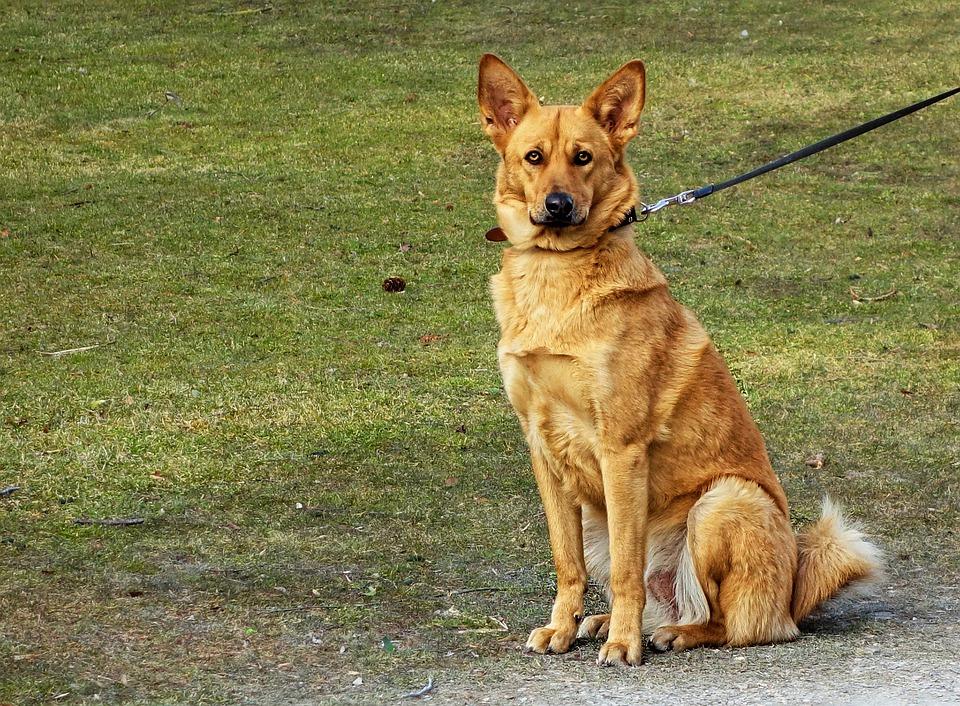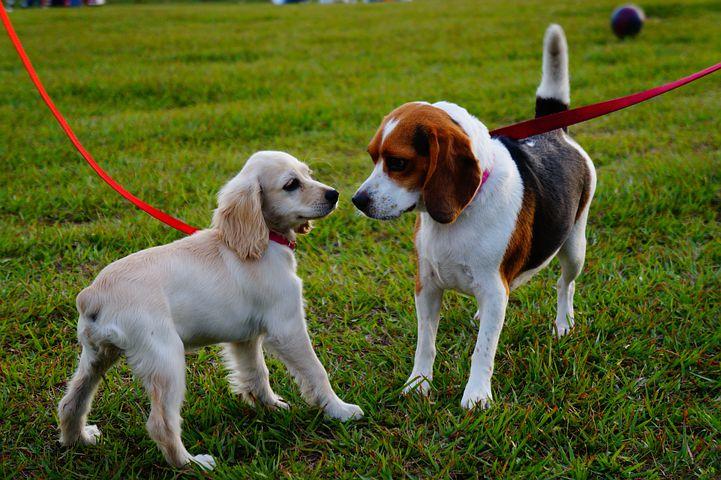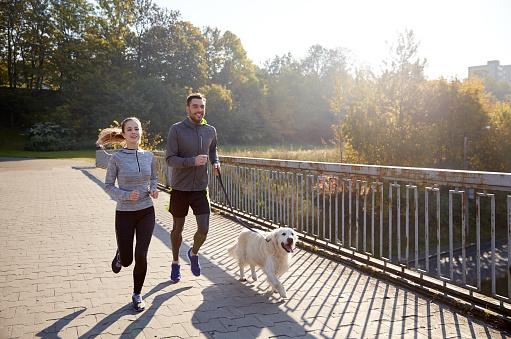When you’re looking for a dog walking service, it’s crucial to find one that stands out in terms of reliability and quality. Happy Pants is the perfect choice, offering an unmatched experience for both pets and their owners. Happy Pant’s approach includes GPS-tracked walks, private strolls, and dependable service every day – from early morning until late at night.
Pet owners always emphasize the importance of choosing a dog walking service that fits their needs and values. This is a critical decision that affects both your peace of mind and your pet’s well-being. Understanding this, Happy Pant has created a range of services designed to go above and beyond:
- Guaranteed Coverage and Backup Support: Making sure walks are always available with advance notice.
- Transparent Pricing without Extra Charges: Clear pricing with no surprises.
- Dedicated Employees and Employee Benefits: Professional dog walkers with benefits for added commitment.
Each of these features plays an important role in establishing Happy Pants as a top-notch dog walking service, dedicated to providing outstanding care and reliable services for your furry friend.
1. Guaranteed Coverage and Backup Support
When you schedule a walk with Happy Pants, you receive a promise of guaranteed coverage. This means that, with at least five business hours’ notice, Happy Pants ensures that your dog’s walk is covered without fail. This guarantee directly addresses one of the most common concerns pet owners have: reliability.
Why is guaranteed coverage important?
Reliability in Scheduling
Imagine planning your day, knowing your dog will be taken care of at the scheduled time, without having to worry about cancellations or no-shows.
Consistency for Your Pet
Dogs thrive on routine. With guaranteed coverage, your pet benefits from consistent walks, which is crucial for their well-being and happiness.
What happens when life throws a curveball?
This is where backup support shines as a standout feature of Happy Pants service offerings. In the event that your regular dog walker can’t make it due to an emergency or planned absence, Happy Pants immediately activates their backup plan:
Seamless Transition
A qualified backup walker steps in to ensure that your dog’s routine remains uninterrupted.
Vetted Professionals
These backup walkers are not just stand-ins; they’re vetted professionals who meet Happy Pant’s high standards.
Benefits for customers:
- Peace of Mind: You can go about your day with confidence, knowing that your furry companion will never miss their much-needed exercise and interaction.
- Security in Emergency Situations: Should an unexpected situation arise, rest assured that Happy Pants has already prepared a contingency plan.
- Trust in Service Consistency: Regardless of circumstances, the quality and reliability of the service you’ve come to expect from Happy Pants remain steadfast.
This level of commitment to guaranteed coverage and robust backup support sets Happy Pants apart from other dog walking services. It’s not just about walking dogs; it’s about providing an unwavering support system for both you and your pet.
2. Transparent Pricing without Extra Charges
Unexpected costs can be a major concern for pet owners when it comes to dog walking services. Happy Pants addresses this directly with a transparent pricing model that eliminates surprises on your bill. You can count on the cost of your dog’s walk to remain consistent, regardless of the day or time.
Here are the details of Happy Pants straightforward approach to pricing:
- No Holiday Surcharges: While other services might charge premium rates during holiday periods, Happy Pants ensures that you do not pay extra for walks scheduled on holidays. Your furry companion gets the same quality care without the added expense.
- Weekend Walks Without Additional Costs: Planning a weekend getaway? With Happy Pants, Saturday and Sunday walks are priced just like any weekday outing, ensuring you can enjoy your weekend without worrying about higher dog walking rates.
- Fixed Rates for Early Birds and Night Owls: Whether you need your dog walked before dawn or after dusk, Happy Pants has you covered at no additional cost. Early morning and late-night walks come with the same transparent fee as any other time of day.
- Consistency in Last-Minute Situations: Life is unpredictable, but your dog walking expenses shouldn’t be. If you find yourself needing a last-minute walk due to unforeseen circumstances, Happy Pants provides this service without tacking on extra charges for short notice.
The benefits of transparent pricing extend beyond just cost savings:
- You can budget more effectively knowing that your dog walking expenses will be consistent each month.
- Trust builds between you and your service provider when pricing is upfront and predictable.
- The focus remains on the well-being of your pet rather than on fluctuating costs.
Happy Pant’s commitment to transparent pricing ensures that you receive no extra charges while maintaining high-quality care for your pet. This policy reflects an understanding of the importance of straightforward communication and respect for customers’ financial planning. With Happy Pants’s clear-cut approach, you experience reliable service that makes financial sense.
3. Dedicated Employees and Employee Benefits
When it comes to providing top-notch dog walking services, the caliber of the employees is paramount. Happy Pants stands out by employing dedicated workers who are not mere contractors but integral parts of the company. Here’s what sets Happy Pants apart with its employment practices:
Commitment to Professionalism
- Serious and Committed Dog Walkers: Unlike many gig economy jobs, Happy Pant streets dog walking as a professional career. By hiring dedicated employees, they ensure that the walkers take their responsibilities seriously and prioritize their commitments.
Full-time Employment Advantages
- Stable and Reliable Workforce: As W2 employees, dog walkers at Happy Pants benefit from job security that is uncommon in the industry, which in turn fosters a stable work environment.
Comprehensive Employee Benefits
- Financial and Health Security: Happy Pants provides a robust benefits package including:
- 401k plans to ensure long-term financial security.
- Health benefits which are crucial for overall well-being.
- These benefits not only attract quality staff but also motivate them to stay committed to their roles.
Impact on Service Quality
- Reduced Turnover: With a steady source of income and substantial employee benefits, turnover is minimized.
- Consistent Service: The dedication of full-time employees translates into consistent, high-quality service for your pets.
- Reduced Absenteeism: A committed workforce means fewer call-outs and no-shows – your scheduled dog walks happen like clockwork.
Happy Pants approach to hiring dedicated employees with competitive benefits demonstrates a commitment to excellence that extends beyond mere dog walking—it’s about creating a reliable service ecosystem where all stakeholders, including employees and pets, thrive.
Benefits for Customers and Their Pets:
- Save Money: Every point you earn translates into savings on future services, helping you make the most of your pet care budget.
- Build a Stronger Connection: Using Happy Pants dog walking services regularly through the loyalty program helps your dog develop a closer bond with their walker, ensuring consistency and personalized attention.
- Recognize Your Loyalty: The program is a Happy Pants way of showing appreciation for choosing them again and again, enhancing your overall experience as a customer.
By making the loyalty program an integral part of every interaction, Happy Pants ensures that you receive rewards that reflect the importance of your pet’s well-being and your happiness as a pet owner.
Happy Pants Dog Walking Services stands out for their unwavering commitment to providing exceptional care and dependable service. The Three additional key differentiators—guaranteed coverage with backup support, transparent pricing without hidden fees, employing dedicated dog walkers as W2 employees, and a rewarding loyalty program—are just a few of the compelling reasons why Happy Pants rises above other options in the market.
Guaranteed Coverage and Backup Support: This ensures your pet is never left without a walk, regardless of unforeseen circumstances.
Transparent Pricing: You appreciate clear costs with no surprises for holidays or unusual hours, making budgeting for your pet’s needs straightforward.
Dedicated Employees: Recognize the value of dog walkers who are invested in their jobs, offering stability and professional service.
Experience these benefits firsthand and see why pet owners trust Happy Pants to enrich their pets’ lives. By choosing Happy Pants, you’re not just getting a dog walker; you’re ensuring that your pet receives care from someone who sees their role as more than just a job—it’s a commitment to being part of your pet’s well-being.
Schedule your first walk with Happy Pants today and join the multitude of satisfied pet owners who have found their perfect dog-walking solution.

















